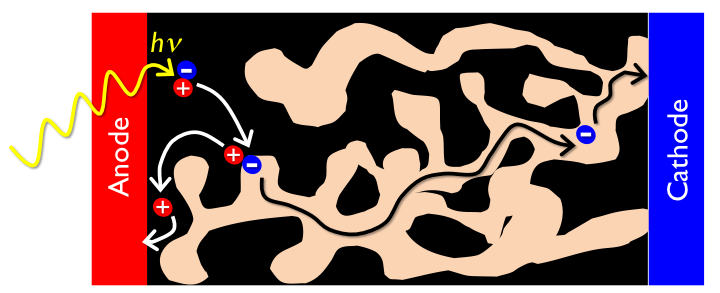Photochemistry of Solar Cells
Overview
We are trying to gain a thorough understanding of the factors that govern charge-carrier recombination in the active layers of organic solar cells (OSCs). The advent of high-efficiency organic solar cells fabricated from abundant materials could play an important role in addressing the world needs for clean, low-cost renewable energy sources. While solar cells based on inorganic compounds represent a technology established for decades, recent progress in organic solar cells makes them a potential new technology in the solar energy arena. Organic photovoltaics (OPV) also hold promise as a technology for low-cost, large-area power conversion. While the power conversion efficiencies of the best OSC now exceed 10%, they remain well below the thermodynamic limit. Therefore, in order for organic solar technologies to start providing a significant fraction of the global power, substantial improvements remain necessary. In order to achieve this, an in-depth understanding of the fundamental mechanisms that define device operation must be reached.

Figure 1. Configuration of a bulk heterojunction organic solar cell, illustrating 5 proceses: (1) photon absorption and exciton generation; (2) exciton diffusion; (3) exciton dissociation; (4) charge-carrier diffusion; and (5) charge-carrier extraction. Bimolecular recombination occurs after exciton dissociation and during charge-carrier diffusion.


